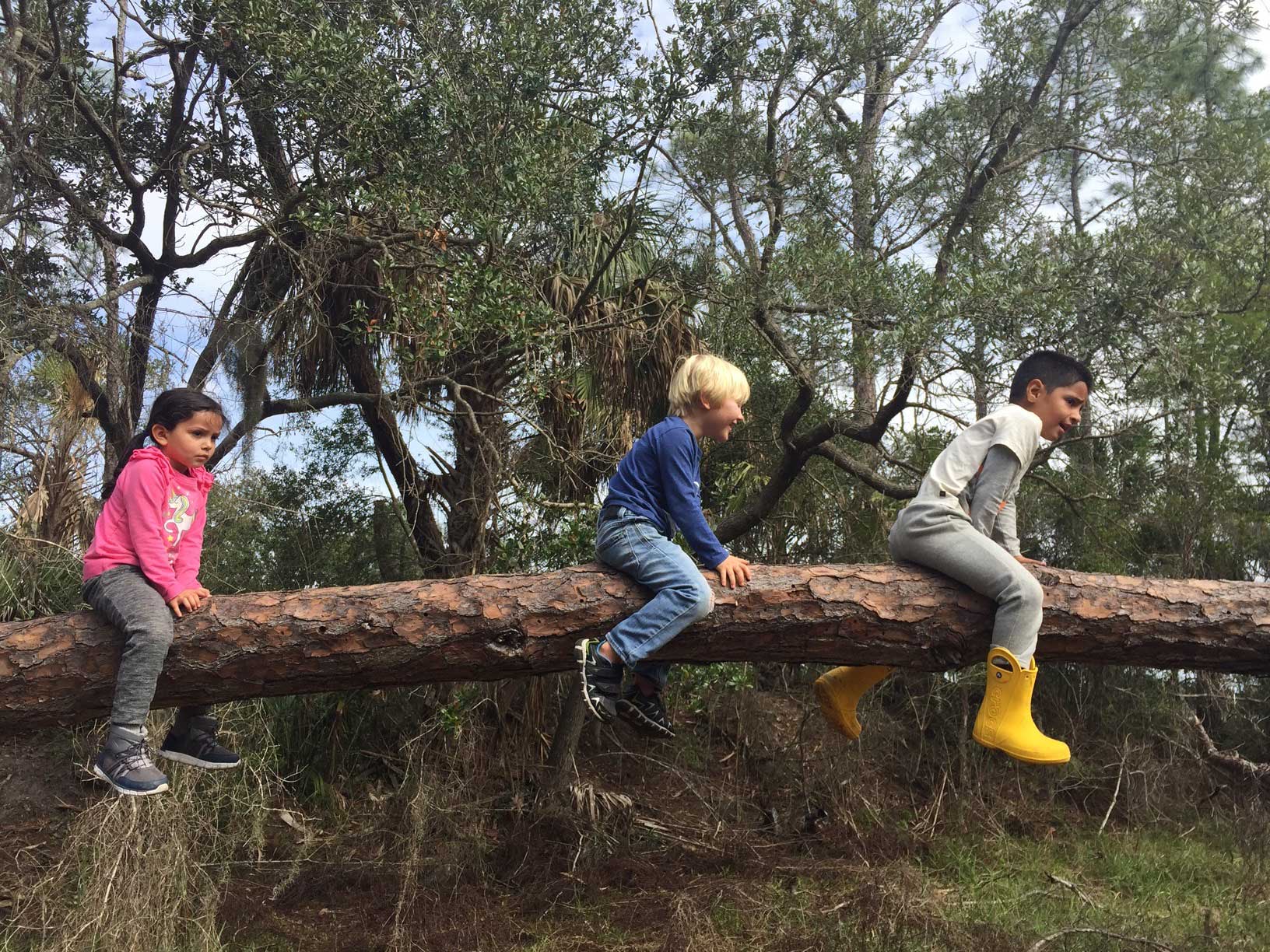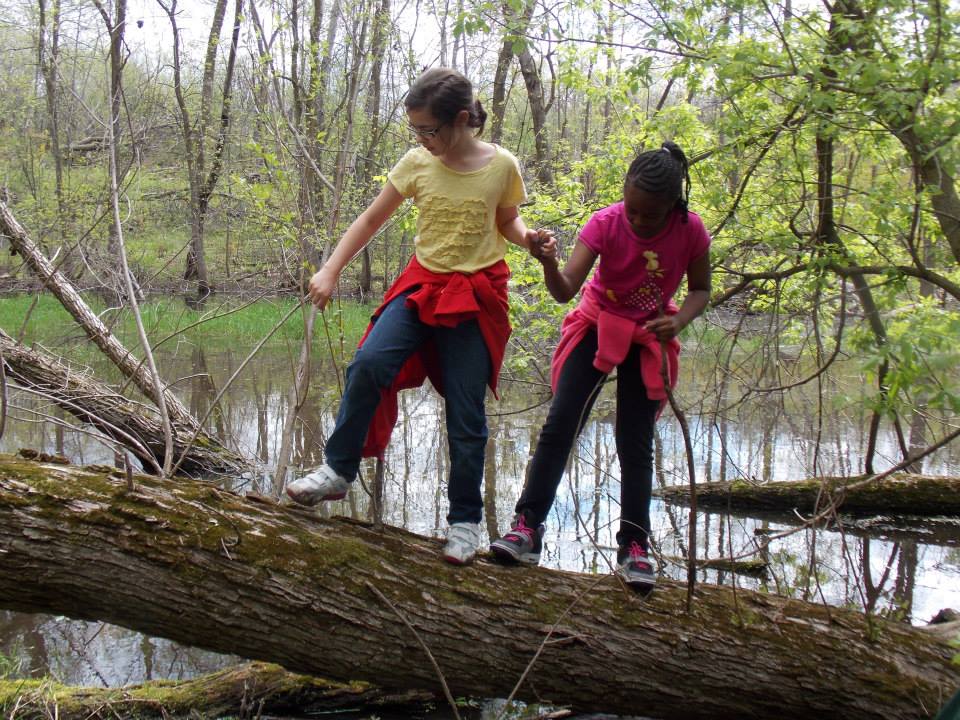February 21, 2021
Progress always involves risks. You can’t steal second base and keep your foot on first.
— Frederick Wilcox
 After many years of erecting especially safe- and, hence, fairly boring- public playgrounds, I have noticed a positive trend around our city towards engineering more challenging “ropes course” type playgrounds. Naturally, these playgrounds are also a bit riskier. The towers are quite a bit taller, their slides are steeper, their climbing apparatuses are not enclosed, and they sometimes have a low zipline. While still a long way from the ideal playground, I find the trend promising for children’s exploration and development and simply more fun.
After many years of erecting especially safe- and, hence, fairly boring- public playgrounds, I have noticed a positive trend around our city towards engineering more challenging “ropes course” type playgrounds. Naturally, these playgrounds are also a bit riskier. The towers are quite a bit taller, their slides are steeper, their climbing apparatuses are not enclosed, and they sometimes have a low zipline. While still a long way from the ideal playground, I find the trend promising for children’s exploration and development and simply more fun.
When we recently visited one of these new playgrounds, I witnessed a mama cheering her toddler who had dared to climb a rope ladder into a tower that stood as tall as the mama’s arms would comfortably reach. He was obviously an adventurous little guy, but it was also obvious that she was allowing him to be himself while, at least in this instance, giving him support that he needed to evaluate an appropriate risk.
The fact is, challenge and risk are what’s exciting and helpful for growth. No matter what our individual children deem a risk, it’s the process of taking the risk that is important. Without frequent opportunity to take risks, children- and yes, grown-up children- are left with a dire consequence of not understanding what exactly a risk is. How are they to know what the danger is if they have never suffered real consequences?
The older children that I teach in our homeschool enrichment program take risks all the time as we hike and climb in the nature reserve. For example, they confidently test how far out on the ice they can walk across a pond. They take maybe three to four steps at most before sensing the subtle changes below the ice, all the while gleefully announcing, “This is so dangerous!” They repeat over and over again along the banks, noticing where the water looks deeper and vocalizing their thought processes as they test each area. There have been missteps with a few wet feet but a lot of learning.
On the surface it’s a fun lesson on the properties of ice and water, but looking deeper I can see how much they gain in the process of risk-taking that they will apply elsewhere. They observe changes to the environment and notice warnings as they act, which in this case was the sound of thin ice under tentative steps. They learn from other’s mistakes, recalling a peer that soaked their socks the week previous, and use that information to evaluate whether the risk is worth the thrill. They consider other possibilities that could lead to another satisfactory thrill, such as throwing things at the ice to test how much force it takes to break.
Childhood is the perfect playground for healthy risk-taking, and as Teacher Tom puts it in one of many articles about the subject, the opportunities go beyond physical dares to other things they may fear.
“Now is the time to practice performing or speaking in front of an audience (generally listed by Americans as a fear greater than death), now is the time to learn about being accepted and rejected by friends, now is the time to learn to deal with disappointment, fear, and even death. Our job as adults is to not help children avoid these things, but rather to help them stop for a moment, assess the risks, plan for the potential consequences, eliminate the unnecessary risk, mitigate the inherent risk, and then pick themselves up, brush themselves off, and get on with their lives of doing.”
Teacher Tom, Fifty Dangerous Things
 There is so much for children to reap from challenging themselves in these ways, and I see these benefits lasting a lifetime. I believe all parents want their children to grow up feeling empowered to handle whatever obstacles they come upon. Moving through the process of risk-taking now provides them with a familiar process and develops capacities necessary for navigating them, such as judgement, planning, perseverance and resilience.
There is so much for children to reap from challenging themselves in these ways, and I see these benefits lasting a lifetime. I believe all parents want their children to grow up feeling empowered to handle whatever obstacles they come upon. Moving through the process of risk-taking now provides them with a familiar process and develops capacities necessary for navigating them, such as judgement, planning, perseverance and resilience.
From my perspective right now, it’s pretty exciting to watch my boys move through their comparatively small risks. Some of the outcomes lead to exhilarating results or hilarious stories, while others are bittersweet but feel really important. It’s also comforting to watch my boys develop sound judgment and learn to trust their intuition and assessments. Oh, we make so many mistakes in life- I feel quite blessed with the chance to support them through many of those mistakes now.

Join us for the ALL NEW online course, Learning in Nature 2 in March! We will explore the inner work of the adult, which includes developing our capacity to allow our children to engage in risky play. Click on the link below to learn more:
https://lifewaysnorthamerica.org/workshops_training/learning-in-nature-2-the-mystery-and-wonder-of-exploring-nature-with-children/
This is wonderful to have this, following the study of Risky Play in the Nature course.
Thank you Acacia!
Warmly,
Sara
Wow, that was my childhood -risk taking, free and outdoors all the times with neighbors, but after moving to USA we forgot so many things and started believing in the things that are put into our minds nowadays. Such a great reminder of the “real play”.
Thanks for the article <3
Navneet